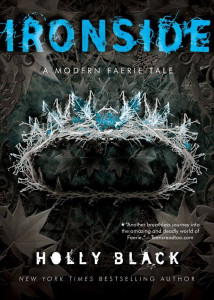 In her book At the Bottom of the Garden: A Dark History of Fairies, Hobgoblins, and Other Troublesome Things, Diane Purkiss gives her readers a chilling glimpse of the fairy world through the eyes of the title character in the Child ballad of “King Orfeo” when he travels under the hill to win back his queen, who has been stolen away by the fairy king. Though the land is one of eternal summer, filled with beautiful people and courtly ceremonies, the walls of the hill are constructed from dead and broken human bodies. Purkiss describes these victims of fairy who have been transformed into the very foundation of fairyland as not just “lost” but “unfinished”:
In her book At the Bottom of the Garden: A Dark History of Fairies, Hobgoblins, and Other Troublesome Things, Diane Purkiss gives her readers a chilling glimpse of the fairy world through the eyes of the title character in the Child ballad of “King Orfeo” when he travels under the hill to win back his queen, who has been stolen away by the fairy king. Though the land is one of eternal summer, filled with beautiful people and courtly ceremonies, the walls of the hill are constructed from dead and broken human bodies. Purkiss describes these victims of fairy who have been transformed into the very foundation of fairyland as not just “lost” but “unfinished”:
These are people lost before their time, invaded by violence. . . . They are like Heurodis, and she is like them. Such persons – those who died in the middle of things – become unfinished, testaments to unfinished lives (pp. 77-8).
It is this combination of eternal summer and bitter sorrow, graceful beauty and cold cruelty, that Holly Black vividly captures in Ironside. More than that, it is the metaphor of fairyland, with its constant threat of stealing life, of leaving a human life empty and unfinished, which fuels the true power of this outstanding YA fantasy novel.
Like some fairy equivalent of Dante’s “Inferno,” the anxiety of becoming one of the lost and eternally exiled haunts the characters in Ironside, and that fear provides motivation for both the human and the fairy characters. “Ironside” is the word that faery kind use to refer to the outside world, the world of slow and graceless humans, the world to which disgraced faeries are banished. This is the world in which Kay, the female protagonist of Ironside, grew up. Even after discovering that she is actually a pixie and one of the fey (a story which is told in Black’s previous novel Tithe), she continues to be emotionally attached to humans, such as her best friend Corny. Corny, a young gay youth with an ironic sense of humor and an addiction to Japanese comics, is one of the best best friends I can recall appearing in YA fiction, and I was very pleased to find that his own story gets plenty of narrative time in Ironside. Kay’s mother also gets more character development, and she is one of the more believable musicians to appear in fantasy in a while, making it clear that her talents are related to her very human dedication and hard work, not to an uncanny faery gift. It is because of the very believable human characters that we understand why Kay continues to feel connected to the human world, and why she works so hard to save this world, while also trying to solve the impossible task set her by her boyfriend, Roiben, the King of the Unseelie Court.
Black’s previous novels Tithe, to which Ironside is a sequel, and Valiant, which is set in the same human/faery world and timeline, both used fairy to express all the magic, tragedy, and possibility of transformation which is so much part of the experience of adolescence. Despite her new-found faery abilities, Kay discovers that they are not much use when it comes to dealing with the usual teenage troubles: her uncertainty about Roiben’s feelings for her and the antagonism of Roiben’s ex-girlfriend, the Queen of the Seelie Court. Being human, Corny feels even more powerless than Kay, and it is because of his sense of powerlessness that he must struggle even more than Kay to not give in to the urge to hurt others, even when they hurt him.
Kay and Corny must both learn that it is the human gifts of ingenuity and compassion which will help to solve their problems and find the answer to the riddle of relationships. At the same time, they must learn to resist the siren lure of self-destructive relationships, which, like faery food, feed the addiction but offer no life-giving sustenance. Ultimately, they discover that these are the talents which grant “true sight” and the ability to distinguish true transformation from mere illusory transfiguration.
Holly Black’s Ironside – along with the preceding books Tithe and Valiant – is highly recommended as an outstanding YA fantasy series which provides a powerful metaphor for young adulthood itself. Most of all, it is that rare and perfect thing, a great book with great characters whose problems you want to all come out right in the end.
(Simon & Schuster, 2007)
